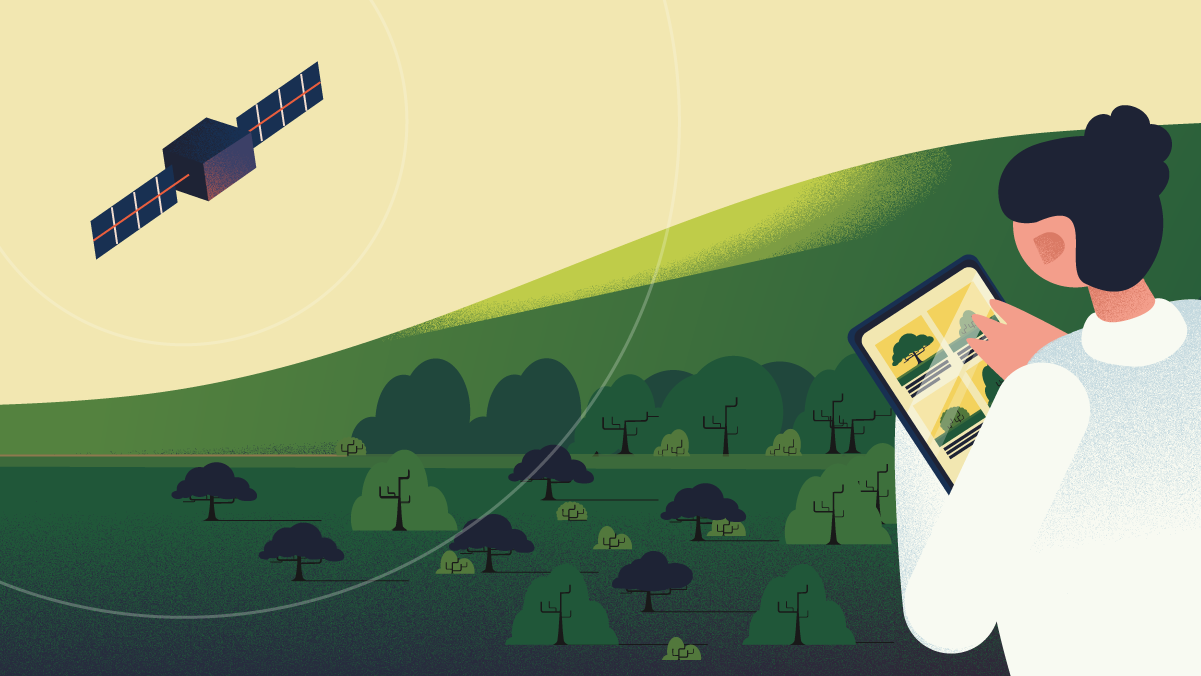Fire risk assessment: Understanding the danger of fires
The FirEUrisk project aims to achieve a shift in thinking regarding wildfire management by looking into risk from three different perspectives: assessment, reduction and adaptation. In a three-part blog series, we’ll explore each of these pillars. In this first post, Prof. Emilio Chuvieco, the scientific coordinator of FirEUrisk, helps us decode the relevance of wildfire risk assessment as the first step towards protecting people and the environment from the devastating effects of extreme wildfires.

Forest fires are a natural part of many ecosystems: they are needed for forest renewal, and to help control damage from insects and diseases. However, climate change is making our forests more vulnerable to large-scale wildfires that are becoming alarmingly frequent. Although great effort has been made by governments and organisations to address this risk, current strategies are based on expensive suppression equipment and operations as well as controversial policies, which often lead to inadequate coordination and inefficient risk management.
“Fire risk conditions are changing because of different socio-economic policies and climate change. We need to have a better understanding on the main factors associated with fire to reduce its negative impacts on societies and the environment,” says Dr. Emilio Chuvieco who is a Professor of Geography at the University of Alcalá in Spain, where he works on satellite remote sensing of fire risk and fire effects. As the scientific coordinator of FirEUrisk Emilio and his research group lead the risk assessment pillar of the project.
Predicting fire behaviour
In the last decade, Europe has experienced some of its most devastating wildfires. As they become larger and more frequent, it is important to determine current fire risk in terms of location, intensity, frequency and probability. “In FirEUrisk we will analyse and evaluate the existing conditions of fire danger, as well as the exposure and vulnerability to fires in terms of lost human lives, and damaged land and infrastructures,” explains Emilio. Therefore, all relevant danger factors that indicate the probability that a fire starts and propagates will be determined within the scope of the assessment pillar of the project.
Different FireEUrisk partners, including the University of Lleida in Spain, the University of Coimbra in Portugal, the CNRS in Italy, University of Split in Croatia, the School of Aerospace Engineering (SIA) – a faculty of the Sapienza University of Rome in Italy – and the University of Alcalá, among many others, are analysing risk factors, such as fuel characteristics, weather conditions and human sources of fire ignition. Combining this data regarding these allows designing fire behaviour algorithms which estimate burn probability and fire intensity. Adds Emilio, “We’re developing geographical databases to show how different risk factors are distributed around Europe. These will eventually be combined into integrated risk indices”. This map will be developed using information from forest inventories and satellites, to help countries better prepare for fires.
The FirEUrisk consortium also aims to estimate the potential risk of wildfires to people, infrastructure, and nature. This includes forecasts on wildfire spread and smoke dispersion. Existing wildfire monitorisation systems rely heavily on satellite data and cannot distinguish industrial from wildfire smoke, which can make it difficult to effectively predict and act upon fires. Therefore, more precise algorithms are needed to improve their efficiency.
Testing the FirEUrisk approach in practice
To show that the algorithms developed in the project are useful, it is important to apply them in real-life settings.
The project will evaluate the algorithms and tools in practice to determine the current wildfire conditions and predict their behaviour. “Evaluating the effectiveness of our work in the whole European territory allows us to determine fire risk at a large scale, but it gives us less information on the variety of specific wildfire risk conditions. That’s why we also study five pilot sites across Europe, which represent different geographical regions with varying fire problems,” says Emilio.
In order to implement the developed strategies in Europe, it is also important to understand the local perceptions of fire risk to prevent unwanted ignitions. According to the European Forest Fire Information System, approximately 95% of the fires in Europe are human induced. Most of them are due to the misuse of traditional practices of straw or shrub-burning to recover areas for cattle feeding. “With our research regarding wildfire risk assessment, we aim at helping fire managers to prioritise their resources and ensure the best protection to people and the environment. To this end, we’re developing a questionnaire with the idea of better understanding how people perceive risk and how emergency situations are managed”.
Emilio´s group along with project partners from the Institute of International Sociology of Gorizia in Italy are also working on a dedicated questionnaire to better understand human perception of fire risk conditions. As a result of these questionnaire, a mobile application for fire risk awareness will be generated. The application will be tested in fire prone demonstration areas around Europe. The ultimate goal of wildfire risk assessment and the FirEUrisk project as a whole is to help a broad range of users, from citizens to firefighters and policymakers, to better assess, prepare for, and manage wildfire risk.
This is the first of three blog posts describing the pillars of the FirEUrisk approach. The other posts will be published on the project blog in the upcoming months. Meanwhile you can read more of FirEUrisk on our project page.
